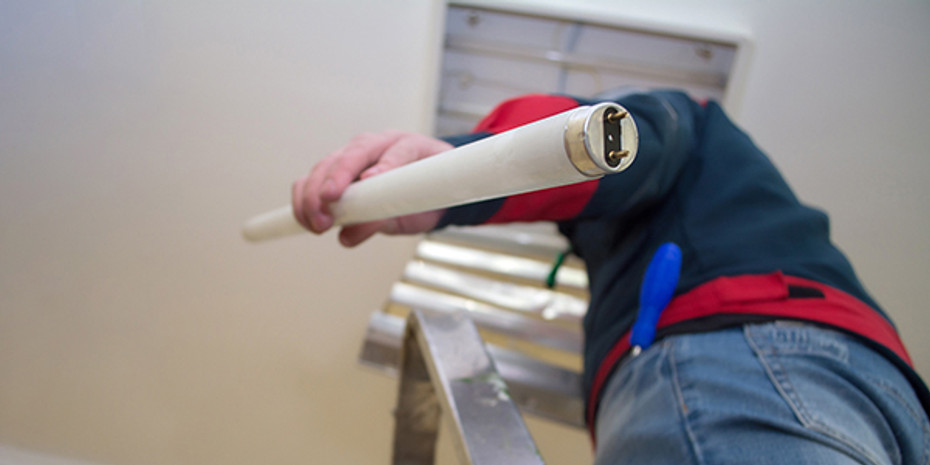FLUORESCENT T12’S VS TLEDS
As with any replacement of older fluorescent lighting with newer LED lighting, making the switch from T12 tube lighting to T8s or T5s tube lighting (TLEDs) comes with a wide range of benefits, in addition to energy savings.
Lasts longer
The average T12 only lasts about 10,000 hours compared to the 50,000 hour life span of TLEDs. While the upfront cost is slightly more, one TLED can save you from having to purchase 4 additional T12s! Maintenance time is also reduced because of the long life of TLEDs.
Quality of light
Fluorescent bulbs emit an unnatural blueish cast. This is due to the lower color index rendering (CRI) of fluorescent lighting, which typically falls in the 60 range. A bulb’s CRI is the measurement of its ability to reproduce colors close to natural lighting. TLED lighting, in contrast, has a CRI of around 80, which means it more closely matches the color of natural light.
Fluorescent lights also tend to be omni-directional, which means they produce light in in all directions. Unfortunately, some of that light is cast upwards and is wasted energy. TLEDs, in contrast, have beam angles of around 120 degrees which means they only output light where it is intended, providing additional energy savings.
No buzzing or toxic substances
When fluorescent lighting nears the end of its useful life, it can flicker or buzz. They also contain mercury which can be hazardous to your staff’s health if they break, and to the environment when disposed of. In comparison, TLEDs do not flicker or buzz when they reach the end of their operating lives and they contain no harmful substances.
All of these qualities make TLEDs the smarter choice for your business lighting needs.
WHAT YOU NEED TO KNOW ABOUT UPGRADING YOUR TUBE LIGHTING
When upgrading from a T12 to a TLED it’s important to know what type of ballast you have in your fixture. A ballast is the heart of the lighting fixture that sends the electricity to the bulb to light it. On commercial tube lighting fixtures, there are 2 types of ballasts: magnetic and electronic.
A magnetic ballast is older technology that preheats the bulb’s cathodes (electrodes in fluorescent bulbs that emit light) before sending voltage to light the fixture. These ballasts usually make a humming or buzzing noise and are larger in size than electronic ballasts.
An electronic ballast is more modern than a magnetic ballast and are quieter, lighter and smaller. They tend to be more energy efficient as well.
There are 2 common types of electronic ballasts; an instant start ballast which immediately sends voltage to the bulb cathodes and a programmable (rapid start) ballast which is a little slower to react but creates less wear and tear on the bulb than an instant start. A programmable ballast senses the current temperature of the bulb's cathodes and uses just enough voltes to power the lights.
To ensure that your bulbs are compatible with your ballasts you must know what type of ballast you have and also what ballasts are compatible with your bulb. This can be easily discovered by looking up the model number of your ballast.
 US Dollars
US Dollars

